Fix: Windows Update Error Code 80244010
The Windows Update Error Code 80244010 typically occurs when the operating system (most commonly Windows 7 and Windows Server) is no longer able to search and find new updates (even though the build is outdated). This issue is more frequent with WSUS (Windows Server Update Services).

Some of the most common reasons behind Windows Update failing with the above error code are:
- Generic glitch – This issue is quite common on Windows 7 endpoint machines, and Microsoft already has a selection of built-in repair strategies that are ready to be deployed. If this scenario is applicable, you can attempt to fix the problem by running the built-in Windows Update troubleshooter and applying the fix that will get automatically recommended.
- Corrupted File in the WU temp folders – Another scenario in which this error will occur is a corrupted temp file located in the SofwareDistribution or Catroot2folders. This might occur after a botched update or after an AV scan that ended up quarantining some items related to the Windows Update component. In this case, you can fix the issue by running a series of commands capable of resetting every WU component including the two temp folders.
- The machine cannot be updated conventionally – Under certain circumstances, the WU component might not work automatically. If the WU function is blocked at a system level, you can most likely fix the issue and bring your OS to build up to date by using the System Update Readiness tool to install the updates that are failing to install conventionally.
- Disabled Detection Frequency policy – If you’re encountering the issue on a Windows Server edition, it’s most likely due to the fact that one of the clients has exceeded the number of trips allowed by default to the WSUS server. To fix this issue in this case, you will need to use the Local Group Policy editor to enable the Automatic Update detection policy and set a global updating interval for all the involved machines.
- System File Corruption – If the Windows Update troubleshooter isn’t able to fix the issue automatically, chances are the affected system is suffering from an underlying corruption issue that cannot be resolved conventionally. In this case, you can fix the issue by refreshing every Windows component with a procedure like a Clean install or Repair install (in-place repair).
Methods to Troubleshoot the Windows Update Error Code 80244010
1. Run the Windows Update troubleshooter
If you’re encountering this issue on an end-user version of Windows 7, there’s a chance that the culprit causing the problem is already covered by a Microsoft-deployed repair strategy. Several affected users that also struggled to resolve this issue have confirmed that running the Windows Update troubleshooter allowed them to fix the issue automatically.
This built-in utility holds a collection of automated repair strategies that will fix a wide variety of Windows Update errors. This tool will start by looking for any inconsistencies, then deploy the appropriate fix automatically if the problem is already covered by a repair strategy.
Here’s a quick guide on how to launch the Windows Update troubleshooter on Windows 7 in order to fix the 80244010 error:
- Press Windows key + R to open up a Run dialog box. Next, type ‘control’ and press Enter to open up the classic Control Panel interface.

Accessing the Classic Control Panel interface - Once you’re inside the Classic Control Panel interface, use the search function in the top-right corner to search for ‘troubleshoot’. Then, from the list of results, click on Troubleshooting to expand on the list of integrated troubleshooters.
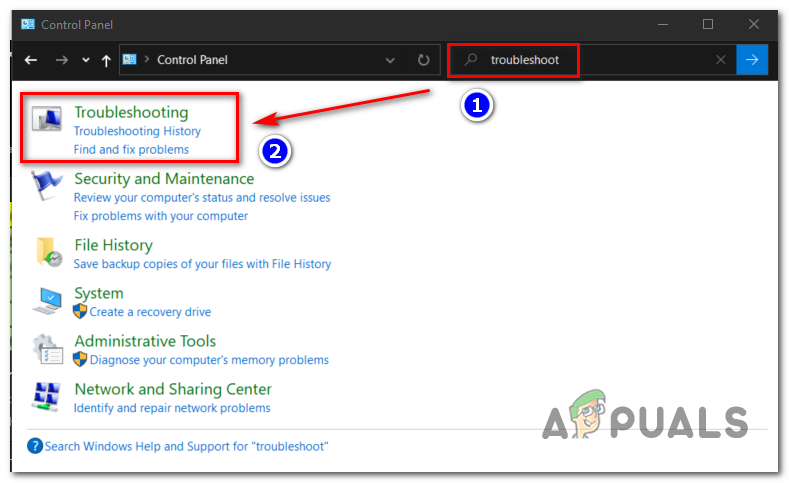
Accessing the classic troubleshooting menu - Once you see the Troubleshoot computer problem screen, click on System and Security from the list of available options.
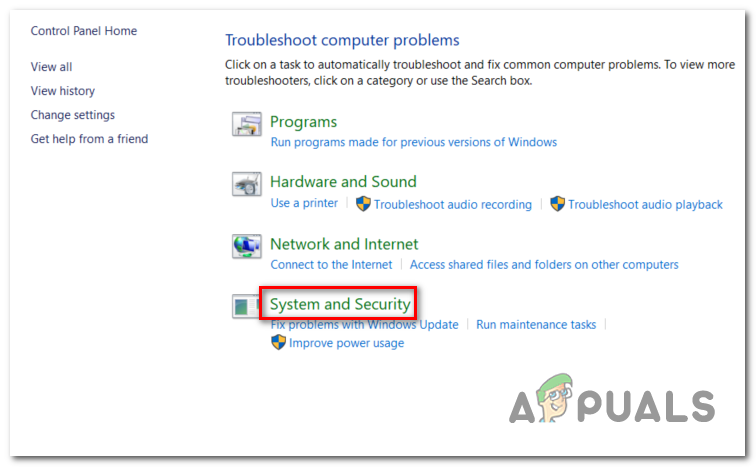
Accessing the System and Security Troubleshooting menu - Once you’re inside the Troubleshoot problems menu, click on Windows Update under the Windows category.

- After you successfully manage to open the troubleshooter, start by clicking on the Advanced button and checking the box associated with Apply repairs automatically. Once this is checked, click on Next to advance to the next menu.
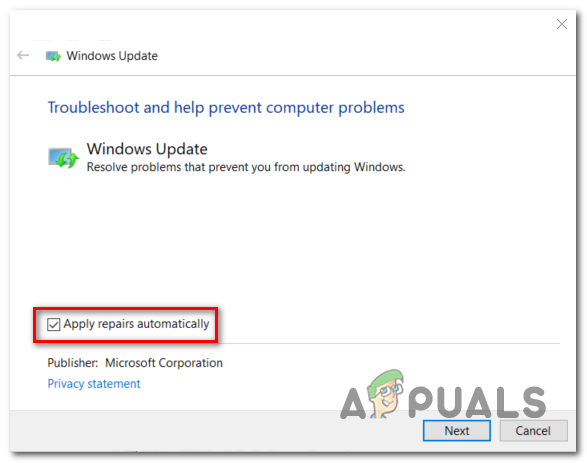
Configuring the Windows Update troubleshooter - Wait for the initial scan to complete, then click on Apply this fix if the repair strategy isn’t applied automatically.

Apply this fix - If you are prompted to restart, do so and see if the issue is resolved at the next system startup by attempting to use the Windows Update feature again.
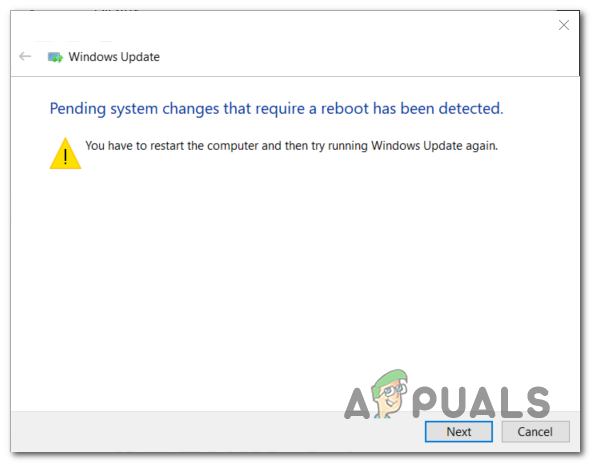
Restart after Windows Update repair strategy was enforced
If you’re still encountering the same Windows Update 80244010 error when you attempt to use the WU function, move down to the next potential fix below.
2. Reset WU components
Another potential cause that might end up triggering the Windows Update 80244010 error is a network inconsistency. In most cases, the problem will be facilitated by a glitched WU component or by a corrupted temporary file located in the SofwareDistribution or Catroot2 folders.
If this scenario is applicable, you can fix the issue swiftly by resetting all WU (Windows Update) components and dependencies involved in this process. There are several different users that confirmed this operation as being the successful fix that allowed them to eliminate the error.
Here’s a quick guide on doing this:
- Press Windows key + R to open up a Run dialog box. Next, type ‘cmd‘ inside the text box and press Ctrl + Shift + Enter to open up an elevated Command Prompt. In case you’re prompted by the UAC (User Account Control), click Yes to grant admin access.

Running the Command Prompt - Once you’re inside the elevated CMD prompt, type the following commands in order and press Enter after each one to stop a selection of key Windows Update services:
net stop wuauserv net stop cryptSvc net stop bits net stop msiserver
Note: These successive commands will stop the Windows Update service, the MSI Installer, the Cryptographic service, and the BITS service.
- After you manage to disable all relevant service, run the following commands in the same elevated CMD window and press Enter after each one to rename the two folders responsible for storing temporary WU files (SoftwareDistribution and Catroot2):
ren C:\Windows\SoftwareDistribution SoftwareDistribution.old ren C:\Windows\System32\catroot2 Catroot2.old
Note: Renaming these two folders will force the Windows Update component to create new folders that will take the place of the old ones and prevent any corrupted files from affecting the updating operations.
- After the two folders have been renamed, run these final commands in quick succession (press Enter after each one) to start the same services that you disabled at step 2:
net start wuauserv net start cryptSvc net start bits net start msiserver
- Once the services have been restarted, repeat the action that was previously causing the Windows Update 80244010 error and see if the issue is now resolved.
In case the issue is still not resolved, move down to the next potential fix below.
3. Run the System Update Readiness Tool
As it turns out, a lot of Windows 7 users have managed to fix the issue by downloading the latest version of the System Update Readiness Tool. Although this tool is included with almost all Windows installations, it’s likely not the latest version available.
Ensuring that you download and use the latest version of the System Update Readiness Tool will allow you to fix the issue swiftly with no additional steps.
Here’s a quick guide on downloading & using the latest version of the System Update Readiness Tool:
- Visit this link (here) and download the latest version of the System Update Readiness Tool. Once you get there, select your language and click the Download button to start the download of the latest version.

System Update Readiness Tool Note: Keep in mind that the download is quite large, so wait patiently until the entirety of the tool is downloaded.
- Once the download is complete, open the System Update Readiness Tool executable and wait for the initial scan to complete.
- Depending on the issues discovered, you might see the utility downloading and installing the updates that were previously failing with the 80244010 error.
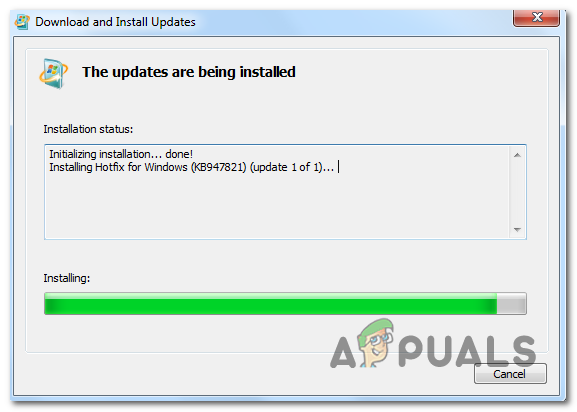
Running the Update Readiness Tool - After the operation is complete, restart your computer and see if the issue is resolved at the next system startup.
In case the same issue is still occurring, move down to the next potential fix below.
4. Enable the Detection Frequency policy
If you’re encountering this issue on a Windows Server version, it’s very likely that the error 0x80244010 is evidence that a client has exceeded the number of trips allowed to a WSUS server. The error code can be translated to WU_E_PT_EXCEEDED_MAX_SERVER_TRIPS and typically occurs on new machines.
To fix this, you will need the Local Group Policy Editor to make a modification to a policy called Automatic Update detection frequency. By enabling this policy, you will force all machines part of the group to use the same specified updating interval.
Here’s a quick guide on using the Local Group Policy Editor to modify the Automatic Update detection frequency policy to fix the 80244010 error:
Note: Keep in mind that not all Windows versions will have the GPEDIT utility installed by default.
- Press Windows key + R to open up a Run dialog box. Next, type ‘gpedit.msc’ inside the text box and press Enter to open up the Local Group Policy Editor. In case you’re prompted by the UAC (User Account Control), click Yes to grant administrative privileges.
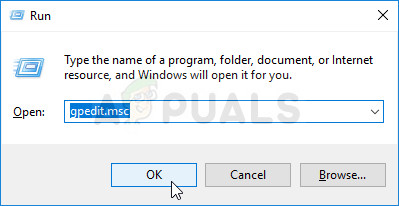
Running the Local Policy Group Editor - Once you’re inside the Local Group Policy Editor, use the left-hand section of the screen to navigate to the following location:
Computer Configuration > Administrative Templates > Windows Components > Windows Updates
- After you arrive at the correct location, move down to the right section and find the Automatic Update detection frequency policy from the list of available options. Once you see it, double-click on it.
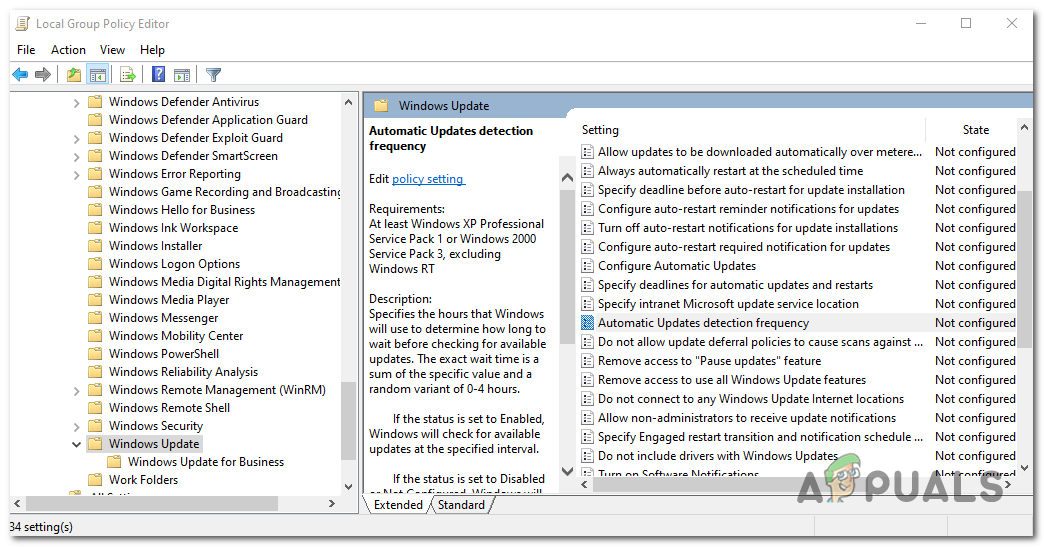
Automatic Update Detection Frequency policy - Inside the Automatic Update detection policy, start by setting the state to Enabled. Next, move down to the Options section and set an acceptable interval that will be used globally by all affected machines.
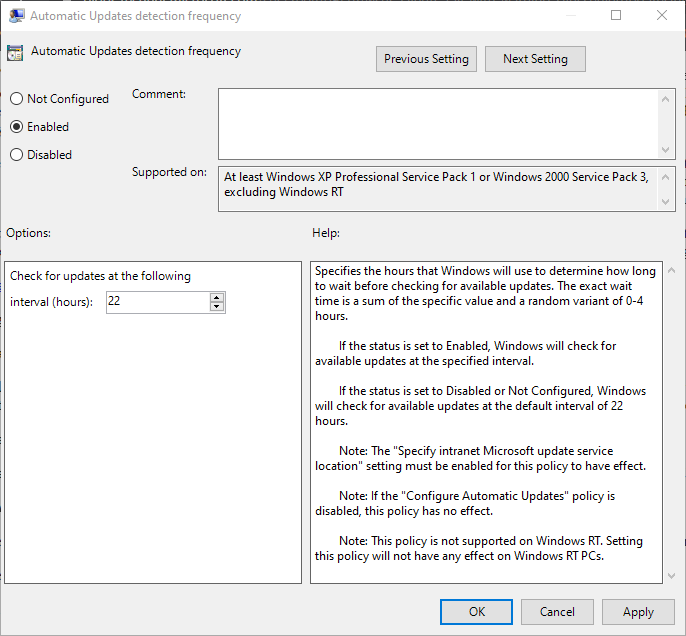
Modifying the Automatic Update Detection policy - Once everything is set up, click on Apply to save the changes, then restart every affected machine and see if the problem has been resolved.
If your WSUS component is still triggering the 80244010 error message, move down to the final fix below.
5. Refresh OS components
If none of the methods presented above have allowed you to resolve the issue, it’s very likely that you’re encountering the due to a Windows inconsistency that you can’t resolve conventionally. In this case, the only viable fix is to reset every Windows component in order to ensure that any type of corruption is removed.
If it all boils down to this, you have a couple of ways forward:
- Clean install – This procedure is the easiest out of the bunch, the major disadvantage is that unless you back up your data in advance, you will lose any personal files including applications, games, and personal media. But as opposed to a clean install, this procedure does not require a compatible installation media.
- Repair install (in-place upgrade) – This procedure will require you to use a compatible installation media. You will need to get a little technical, but the major advantage is that the operation will only touch the Windows files. This means that all your personal files & settings (including videos, photos, music folder, apps, games, and even some user preferences) will remain untouched.





